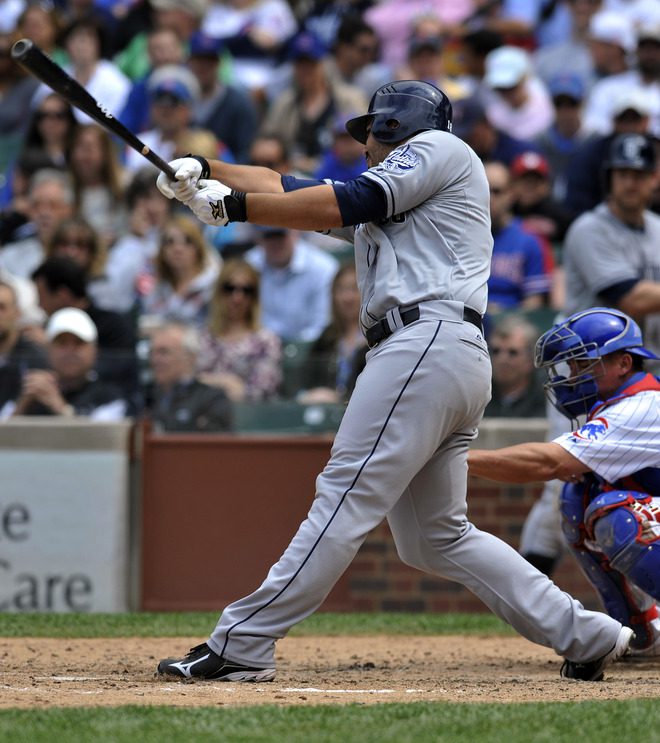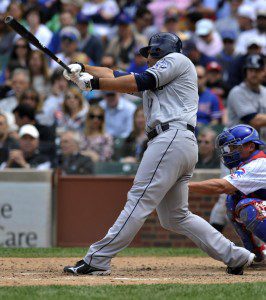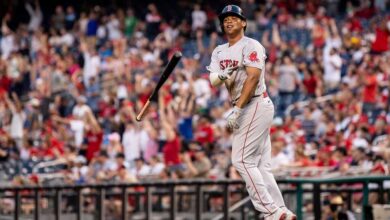

The San Diego Padres traded Simon Castro, a former top-100 prospect, along with Pedro Hernandez to acquire the right-handed slugger Carlos Quentin. Josh Byrnes, the new Padres GM, who ironically dealt Quentin to Chicago, expressed regret when talking about the previous trade of Quentin. The Padres dealt a promising prospect in Castro, whose stock had all but fallen off, and a fringe prospect in Hernandez. The Padres made the trade, dealing from pitching depth, to acquire a much-needed offensive threat for the middle of the order.
So, why trade for a player in Quentin when it doesn’t look like the Padres will be true contenders in 2012? Well, the National League West is always wide open, and the Padres have vastly improved their farm system. According to many analysts, they have the deepest in all of baseball. The Padres also wanted to protect young players such as newly acquired first base prospect Yonder Alonso, whom they acquired in the Mat Latos trade. Having a player like Quentin in the lineup makes everyone else better. For years, the Padres have lacked protection for players who may not be ideal middle-of-the-order bats. Quentin, when healthy is a true middle-of-the-order thumper.
Many Padre fans have become very frustrated or apathetic due to low payroll, a musical chairs of general mangers, the trading away of star talents like Jake Peavy and Adrian Gonzalez, and ownership instability. Now, ownership is up for sale again. It is possible the new ownership group will want to put their stamp on the organization, too.
One thing to consider if the Padres were to trade Quentin in the hopes of bringing back more prospects: Would they be able to get the value back they traded away to get him? I have my doubts that the Padres would receive equal value, since Quentin has already missed one third of the season due to his preseason knee surgery.
Byrnes held zero reservations making myriad moves in the offseason in hopes to restore some faith in the fan base, and to possibly contend for 2012, but more realistically to build for 2013. Byrnes has said he would evaluate Quentin’s production this year, along with how he performs in PETCO Park and strongly consider extending the right-handed slugger.
The Padres do not have MLB-ready outfielders to step in to fill Quentin’s shoes if they deal him at or before the trade deadline. The Padres need a proven run producer, and Quentin is just that. Suffice to say, with Quentin’s injury history, he is a risk. However, with the lack of MLB talent in the minors, if the Padres were to deal Quentin for B-prospects, the fan-base will be up-in-arms again. The fans would say, “Where’s our clean-up hitter — our protection for our young up-and-coming players?” We just dealt him for more unproven prospects.
Why trade a proven run-producer when you do not have a replacement in the minors who will be here in the foreseeable future? The Padres have outfield top prospects, some of which are not producing, others who are not close. While Quentin is the second-highest paid player behind closer Huston Street (who also could be a trade chip this July) making $7.025 million this year, he is not exactly breaking the bank either. a
The Padres have the lowest payroll in baseball at $ 55,621,900 and are due for new ownership, which could take over by the end of season, if not sooner. I believe it’s safe to say the Padres new regime would want to up the payroll in order to present fans with a more competitive and exciting brand of baseball. Given the Padres needs, Byrnes’ fondness of Quentin and the Padres deep farm system, I believe the Padres should continue to add pieces, rather than subtract.




